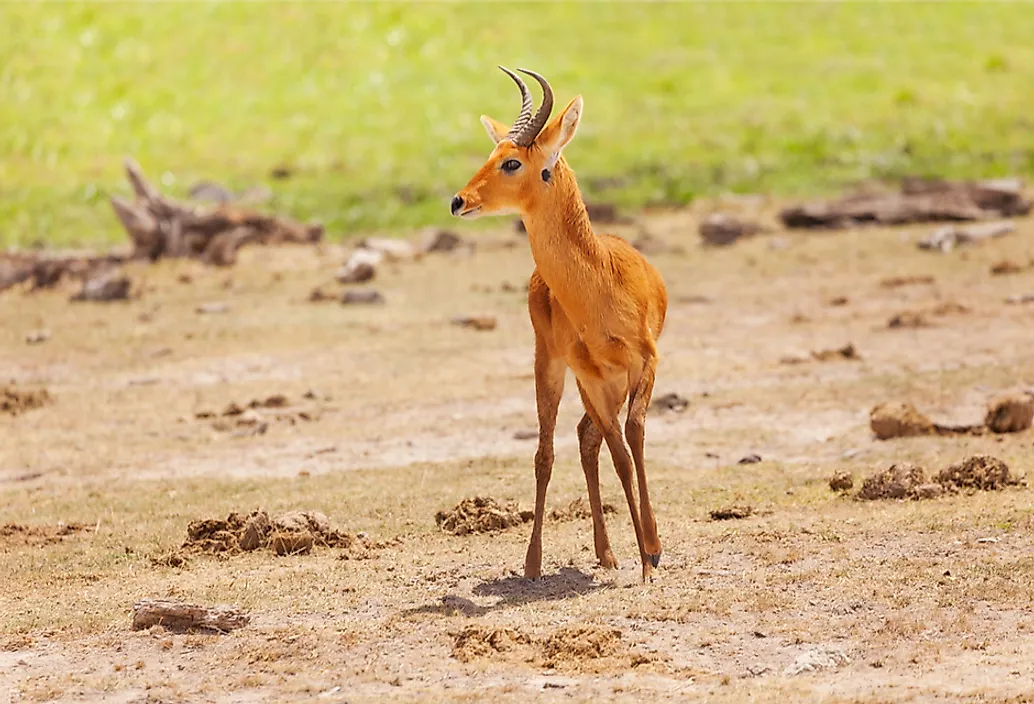Unique Species of Africa: Oribi

The oribi is an antelope species that belongs to the Ourebia genus. This antelope is recognized by its short, tan colored fur, white underbelly, and dark brown tail with white underneath. The female has darker colored fur on the top of its head, as well as the tips of its ears, while the male has ringed horns that measure between 3.1 and 7.1 inches in length. The oribi is divided into 8 subspecies, all of which grow to between 20 and 26 inches in height. Additionally, the species has an average weight of anywhere from 26 to 49 pounds. In most of the oribi subspecies, females typically weigh more than males. The oribi lives in groups of up to 4 individuals in territories that range between 62 and 247 acres in area. The group is dominated by an alpha male, who is responsible for defending the range. This species is primarily active during the daytime.
Where Does the Oribi Live?
The oribi species inhabits the southern, eastern, and western regions of Africa. It does not show preference for a specific ecosystem, although it is most commonly associated with savannas and grasslands. Within these habitats, however, the oribi has been recorded living in both tropical and montane regions that range from low elevations to more than 6,000 feet above sea level. The species is social with other animals and can graze peacefully alongside the Thomson’s gazelle, hippopotamus, and hartebeest. Some researchers believe these species intermingle because they share the same predators, which means the likelihood for sighting a predator and escaping its grasp is increased. Despite having a large range across Africa, the oribi has not been reported in Burundi for an extended period of time, which suggests that the species is now extinct in the country.
Threats Faced by the Oribi
The International Union for Conservation of Nature (IUCN) has given the oribi a conservation status of “least concern” due to its large population size (approximately 750,000) and the fact that half of the population lives in protected conservation areas. The orbi population outside these protected areas, however, is declining. Experts believe that if this population decline continues, many oribi subspecies will become extinct. One example is the Kenya oribi, which is believed to be extinct. Another subspecies, such as Haggard’s oribi, is listed as vulnerable due to its small geographic range and declining population size.
The biggest threat faced by the oribi species is the loss of habitat due to the expansion of agriculture endeavors. Additionally, oribi are seen as a source of meat for many individuals in Africa and have been subjected to overhunting and poaching. As cropland continues to be cleared and as more livestock are set to graze across larger tracts of land, the oribi is pushed into smaller and more fragmented habitats. This pattern is seen in the increasing number of oribi found in protected areas and away from human settlements. Even in these protected areas, the population is not fully protected. For example, Boma National Park and Southern National Park in South Sudan have reported reduced population sizes in recent years.











